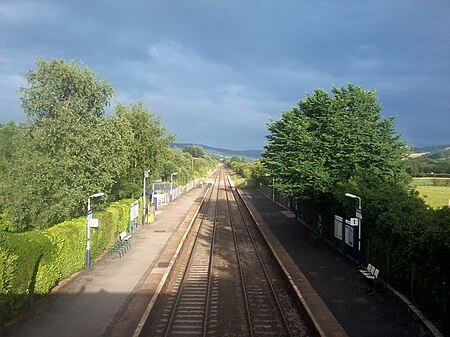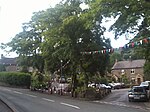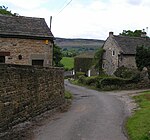Bamford railway station
DfT Category F2 stationsEast Midlands railway station stubsFormer Midland Railway stationsNorthern franchise railway stationsPages with no open date in Infobox station ... and 4 more
Railway stations in DerbyshireRailway stations in Great Britain opened in 1894Railway stations served by East Midlands RailwayUse British English from March 2015

Bamford railway station serves the village of Bamford in the Derbyshire Peak District, in England and is managed by Northern Trains. It is located 13 miles (21 km) west of Sheffield on the Hope Valley line.
Excerpt from the Wikipedia article Bamford railway station (License: CC BY-SA 3.0, Authors, Images).Bamford railway station
Station Road, High Peak
Geographical coordinates (GPS) Address Nearby Places Show on map
Geographical coordinates (GPS)
| Latitude | Longitude |
|---|---|
| N 53.3389 ° | E -1.689 ° |
Address
1
Station Road
S33 0AH High Peak
England, United Kingdom
Open on Google Maps











